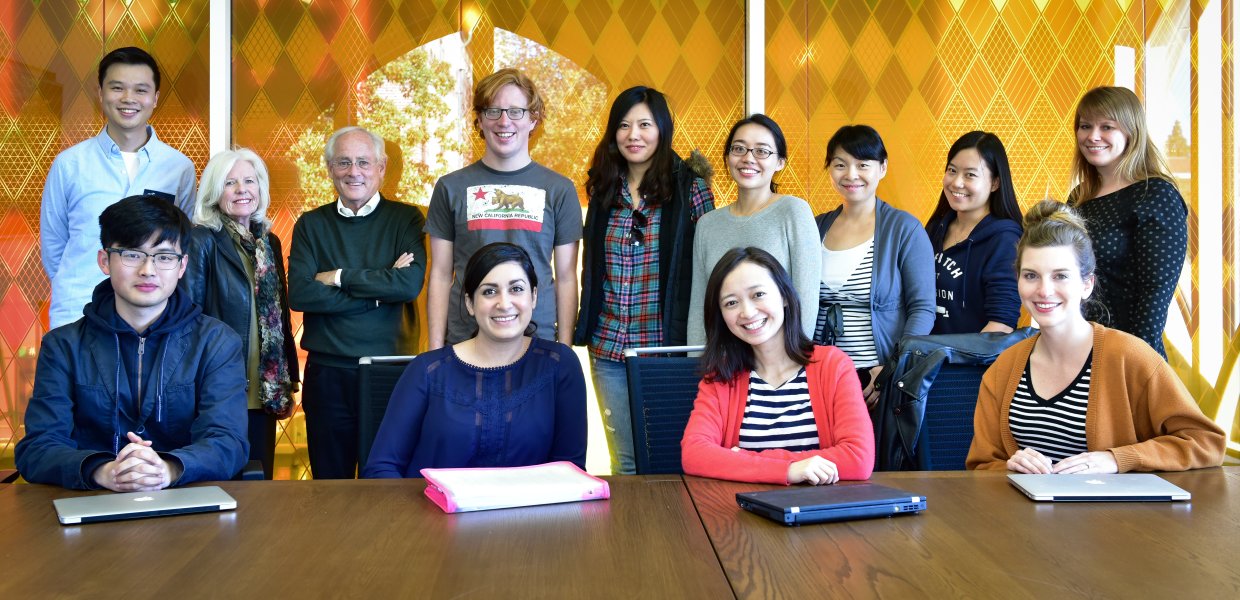What do quirky t-shirt designs--avocados riding a bicycle built for two, a cat astronaut, pages and pages of movie, TV, and pop culture references--have to do with how humans create networks with one another?
A grant from the National Science Foundation is allowing USC Annenberg Communication Professors Janet Fulk, Peter Monge, and Lian Jian to work with colleagues at Northwestern University and Northeastern University to study the sprawling connections that power online creative crowdsourcing sites.
Lead investigator Fulk, along with her two co-investigators, Monge and Jian, as well as over a dozen Annenberg Communication doctoral students, are focusing on a popular design website called Design Maker. (Not its real name. Because of their data sharing agreement with the site, the researchers are not publicizing the name of the company.)
On Design Maker, artists submit designs they hope will eventually be printed on t-shirts, tote bags, iPhone cases, and throw pillows. Everything is user driven: the designs, the votes, the purchases.
Users score designs that are submitted by artists and that helps the Design Maker team choose which designs to print. There are many other websites that offer similar designs by independent artists but Design Maker is unique in that it allows users to vote before designs are produced.
This distinction, said Fulk, is why Design Maker is so valuable to their team.
"They provided us with sales data on the products, which most other design sites are not able to provide for research. This allows us to track not only how designs are rated within the community before production, but also how the design fared in the marketplace.”
Through data provided by Design Maker, they will be able to follow a design from submission to production to sales, asking how relationships and networks within the Design Maker community influence decisions at each step.
Fulk, Monge, and Jian are all members of the Annenberg Networks Network, or ANN, a research group that studies social networks. Their work asks important questions about why and how humans connect and make choices.
As they study the relationships between users on Design Maker, the voting system will also likely provide information about how influence spreads in a community.
"Social influence is much more prevalent when potential voters can see how other people have voted," said Fulk, "compared to if they do not have information on how others have voted before making their own independent choice."
The Design Maker website shows how many people have voted on an individual design. Users can also comment on the designs. If the commenter has submitted a design themselves, there will be a link, asking other users to score that design.
The social hierarchy of online communities can be useful both to researchers and to the site. Is a community member a "lead user" or an "occasional user"? If a lead user comments favorably on a design, will that influence other votes and comments? Will artists vote on each other's designs reciprocally?
According to Fulk, "If site designers can learn the social influence processes of types of users who are most predictive of product success in the marketplace, they can make better decisions about which products to take to the market."
The NSF project itself is a study in large group collaboration. Three teams of researchers, spread across the country in Los Angeles, Chicago, and Boston, are all working toward a common goal.
"Research has shown that although collaboration across institutions is more difficult, it produces research that generally is of very high quality," said co-investigator Jian.
The USC researchers and their colleagues at Northwestern and Northeastern bridge the distance by meeting on a regular basis and coordinating their work over email, phone, and video.
Ultimately, the ANN team's research with the NSF grant extends past Design Maker.
One artist uploading their design on Design Maker today could lead to changes in academia, the corporate world, and other creative projects as Fulk and her colleagues extrapolate their findings into a better understanding of how groups of people work together on larger projects.
Said Fulk, "By using multidimensional network analysis to identify relationships among people and products, we can better understand how to facilitate large-scale collaboration and learning."
